Pollinator Friendly Solar Farms
A pollinator-friendly solar farm in Minnesota. Photo by Rob Davis, Center for Pollinators in Energy, used with permission. By Sue Smith-Heavenrich Solar farms are sprouting everywhere, from small community clusters of arrays to large industrial installations. Colby College, in Waterville, recently flipped the switch on its 9-acre, 5,300-panel solar field. The Madison Business Gateway in
